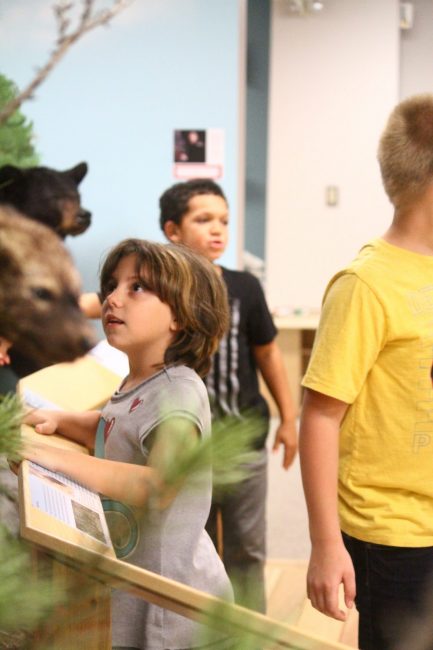
On Monday, Sept. 23, local third-grade students gathered at Ferris State University’s Fine Art Gallery and Card Wildlife Education Center to learn about animals and art.
The field trip kicked off the first day of the new Language Artists program for students at Crossroads Charter Academy, Brookside and Riverview elementary schools.
Originating from the Language Artists program in Grand Rapids between the Grand Rapids Art Museum and local schools, the new Big Rapids program developed as a way to make reading and writing fun for kids.
“The collaboration developed after looking to see what needs weren’t being met,” Carrie Weis, director of galleries at FSU, said. “Reading is one of the areas students struggle with the most in Mecosta County.”
During their time at FSU, students rotated between four stations at both the Fine Art Gallery and Card Wildlife Education Center, learning about animals in a variety of environments.
Weis said the program serves as a way to get kids excited about art and literacy, while doing something they don’t usually get to do.
“It’s kind of a different lesson than what they would normally have, and an attempt to get art into the classroom,” she said.
Michigan is experiencing literacy issues within its communities. The Language Artists Program was designed at the Grand Rapids Art Museum to connect the community and raise literacy rates among 3rd graders. In the fall of 2019 it was initiated in Mecosta County. The goal is to help students learn to read so that they can read to learn. The Language Artists Program is a collaborative effort between Mecosta County Reads, Ferris State University, the Big Rapids Public Library, the ArtWorks Gallery downtown, and the local elementary schools in Big Rapids. The project introduces students to the resources they have in their community while trying to complete an assignment. The assignment: Create an animal from two existing animals, research those animals, create an image of your animal, write a story about your animal, and then, in the spring, the pieces of art get displayed at ArtWorks.

